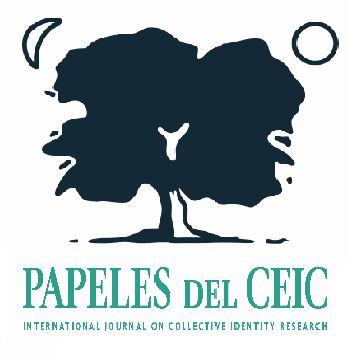A sculpture that includes victims of exclusionary social fields. The case of the Slaughter of Floresta, Buenos Aires (Argentina)
##plugins.themes.bootstrap3.article.main##
##plugins.themes.bootstrap3.article.sidebar##
Published
28-02-2017
Alicia Irene Rebollar
Abstract
In late December 2001, three young people died in the neighborhood of Buenos Aires, Floresta, in a case of "easy trigger", known as the Slaughter of Floresta. Twenty-four marches had place to ask for justice. After the condemnation of the perpetrator, the neighborhood focused on the construction of a monument-tribute. Dissimilar victims came together In this sculptural work: victims of state terrorism, consecrated in the public space, along with victims of state repression in democracy who were fighting for recognition in the field of human rights as victims of insecurity. How was possible to unite these victims with different worldviews in the same monument-tribute? In order to answer this interrogation, qualitative fieldwork was used, mainly interviews with the main actors involved in the creation, construction, siting and inauguration of the sculptural work. The analysis is based on authors whose theories allow to avoiding the naturalization of the categories used. From a procedural and relational perspective, I show that, in addition to state repression, the preeminence of a point of view among those who integrate the field of human rights in Argentina was a fundamental element for the concretion of a sculptural work, which brought together hierarchically dissimilar victims
How to Cite
Rebollar, A. I. (2017). A sculpture that includes victims of exclusionary social fields. The case of the Slaughter of Floresta, Buenos Aires (Argentina). Papeles De Identidad, 2017(1), papel 172. https://doi.org/10.1387/pceic.16969
##plugins.themes.bootstrap3.article.details##
Keywords
victims, state terrorism, democracy, monument-tribute, human rights
Section
Single Topic Issues
Papeles del CEIC is distributed under the licence Creative Commons Reconocimiento-NoComercial-SinObraDerivada 3.0 España (CC BY-NC-ND 3.0 ES)
Usted es libre de:
- copiar, distribuir y comunicar públicamente la obra
Bajo las condiciones siguientes:
- Reconocimiento — Debe reconocer los créditos de la obra de la manera especificada por el autor o el licenciador (pero no de una manera que sugiera que tiene su apoyo o apoyan el uso que hace de su obra).
- No comercial — No puede utilizar esta obra para fines comerciales.
- Sin obras derivadas — No se puede alterar, transformar o generar una obra derivada a partir de esta obra.
Entendiendo que:
- Renuncia — Alguna de estas condiciones puede no aplicarse si se obtiene el permiso del titular de los derechos de autor
- Dominio Público — Cuando la obra o alguno de sus elementos se halle en el dominio público según la ley vigente aplicable, esta situación no quedará afectada por la licencia.
- Otros derechos — Los derechos siguientes no quedan afectados por la licencia de ninguna manera:
- Los derechos derivados de usos legítimos u otras limitaciones reconocidas por ley no se ven afectados por lo anterior.
- Los derechos morales del autor;
- Derechos que pueden ostentar otras personas sobre la propia obra o su uso, como por ejemplo derechos de imagen o de privacidad.
- Aviso — Al reutilizar o distribuir la obra, tiene que dejar bien claro los términos de la licencia de esta obra.
The author can use his/her article freely always indicating that it has been published in Papeles del CEIC. International Journal on Collective Identity Research. Any re-edition of the article must be approved by the journal editorial team.


 http://orcid.org/0000-0001-7458-8108
http://orcid.org/0000-0001-7458-8108